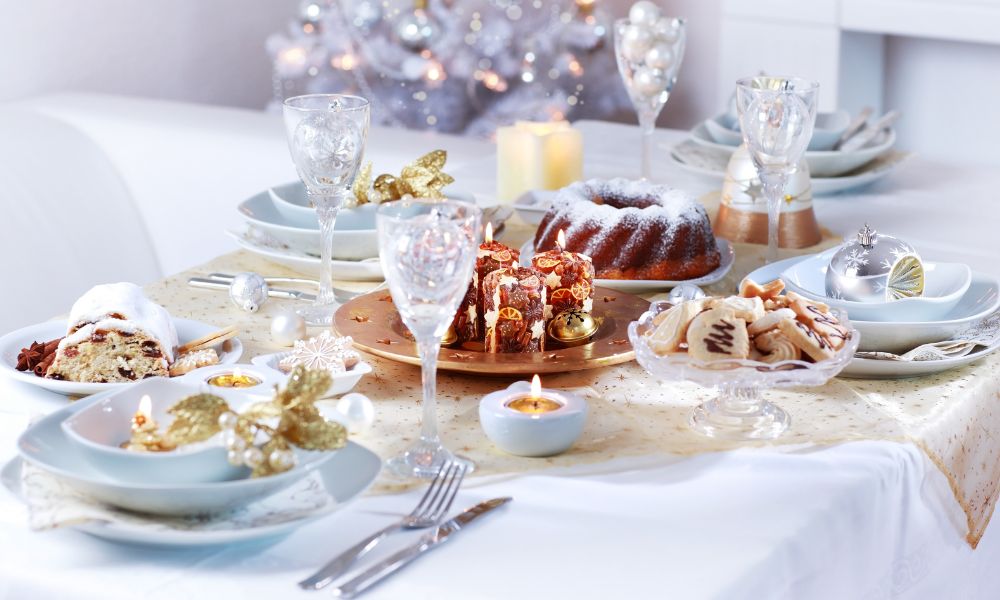Using cutlery correctly at a formal dinner is a fundamental aspect of dining etiquette. Mastering this skill not only enhances your dining experience but also ensures you leave a positive impression. Whether you’re attending a business dinner, a wedding reception, or any formal gathering, understanding how to use cutlery properly will make you feel confident and poised. This article provides a comprehensive guide on how to use cutlery in a formal dinner setting, covering everything from basic principles to handling specific utensils.
Understanding the Basic Principles
The first step in mastering formal dining etiquette is understanding the basic principles of cutlery use. At a formal dinner, the cutlery is arranged in the order of use, starting from the outside and working inward. This means the utensils for the first course are placed farthest from the plate, and those for the main course are closest. Forks are typically placed on the left side of the plate, while knives and spoons are on the right. The knife blades should always face the plate. Above the plate, you will often find the dessert spoon and fork. This arrangement helps guide diners through the sequence of courses in a structured manner.
Using the Correct Utensils for Each Course
Each course in a formal dinner typically requires specific utensils, and using the correct ones is essential for maintaining proper etiquette. Start with the outermost utensils and work your way inward. For example, if the first course is a salad, use the outermost fork on the left. If soup follows, use the spoon placed on the far right. When the main course arrives, use the innermost fork and knife. If fish is served, there might be a fish fork and knife, which are usually smaller and differently shaped than the main course cutlery. For dessert, use the utensils placed above the plate. Remembering this progression ensures you use the right tools for each dish.
Holding Cutlery Correctly
Properly holding cutlery is crucial in a formal setting. For forks, hold the handle with your index finger resting on the back of the fork and your thumb and other fingers wrapped around the handle. Knives should be held similarly, with the index finger on the back of the blade and the thumb and fingers wrapped around the handle. When cutting food, hold the knife in your right hand and the fork in your left. Apply gentle pressure with the knife while holding the food steady with the fork. After cutting, you can switch the fork to your right hand to eat, or continue to eat with the fork in your left hand if following European style. Spoons should be held like a pen, with the handle resting on the side of your middle finger and the thumb and index finger guiding the movement.
Navigating Common Pitfalls
Even with a good understanding of cutlery use, it’s easy to make mistakes. One common pitfall is resting used cutlery on the tablecloth, which can cause stains and is considered poor etiquette. Instead, place the knife and fork on the plate between bites, with the handles resting on the edge and the tips pointing towards the center. When you have finished your meal, place the knife and fork together diagonally across the plate, with the handles at the four o’clock position and the tips at ten o’clock. Another mistake is using cutlery for unintended purposes, such as using a knife to scoop food. Each piece of cutlery is designed for a specific purpose, and using them correctly enhances the dining experience.
Special Considerations for Different Types of Cutlery
Formal dinners often include a variety of cutlery beyond the standard fork, knife, and spoon. Understanding the use of specialty utensils can further enhance your dining etiquette. For instance, a fish knife has a wider blade designed for separating fish flesh from bones. A butter knife, usually smaller and rounded, is used for spreading butter on bread. Oyster forks, small and three-pronged, are used for shellfish. If presented with a variety of specialty cutlery, take a moment to identify each piece and its purpose. When in doubt, observe other diners or ask your host discreetly. Familiarity with these utensils demonstrates a higher level of etiquette and sophistication.
Conclusion
Mastering cutlery use in a formal setting reflects good manners and respect for traditions. By understanding the basics, using the correct utensils, holding cutlery properly, and avoiding common mistakes, you can confidently navigate any formal dining situation. These skills enhance your experience and leave a positive impression. Whether at a business dinner or a special celebration, proper cutlery use is a mark of polished etiquette and sophistication.

